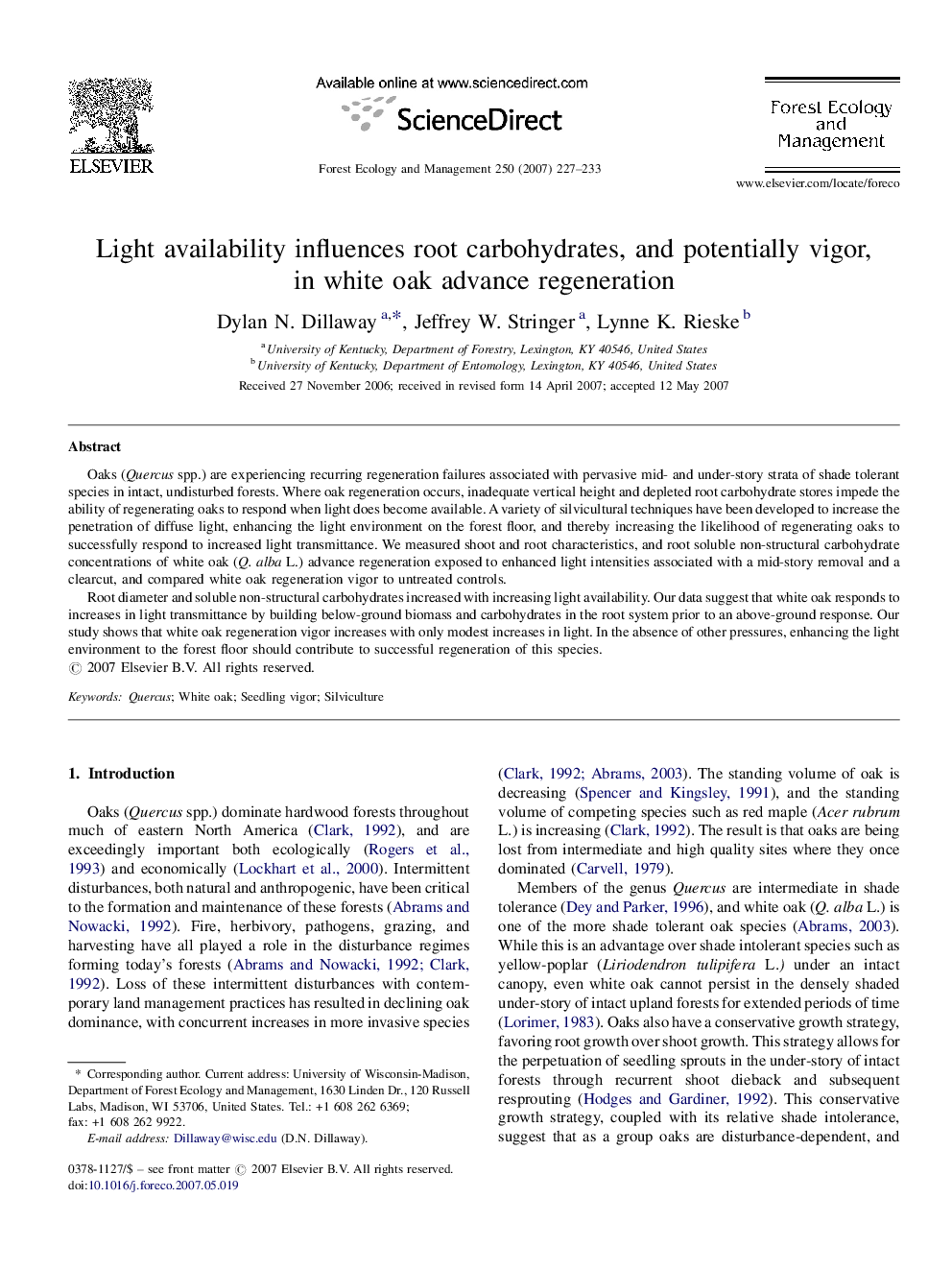| Article ID | Journal | Published Year | Pages | File Type |
|---|---|---|---|---|
| 90420 | Forest Ecology and Management | 2007 | 7 Pages |
Oaks (Quercus spp.) are experiencing recurring regeneration failures associated with pervasive mid- and under-story strata of shade tolerant species in intact, undisturbed forests. Where oak regeneration occurs, inadequate vertical height and depleted root carbohydrate stores impede the ability of regenerating oaks to respond when light does become available. A variety of silvicultural techniques have been developed to increase the penetration of diffuse light, enhancing the light environment on the forest floor, and thereby increasing the likelihood of regenerating oaks to successfully respond to increased light transmittance. We measured shoot and root characteristics, and root soluble non-structural carbohydrate concentrations of white oak (Q. alba L.) advance regeneration exposed to enhanced light intensities associated with a mid-story removal and a clearcut, and compared white oak regeneration vigor to untreated controls.Root diameter and soluble non-structural carbohydrates increased with increasing light availability. Our data suggest that white oak responds to increases in light transmittance by building below-ground biomass and carbohydrates in the root system prior to an above-ground response. Our study shows that white oak regeneration vigor increases with only modest increases in light. In the absence of other pressures, enhancing the light environment to the forest floor should contribute to successful regeneration of this species.
